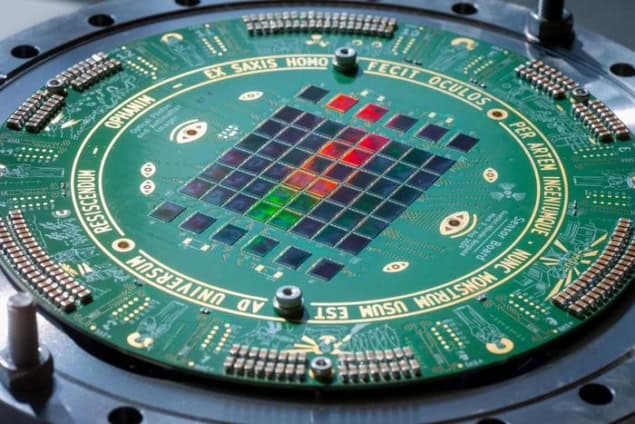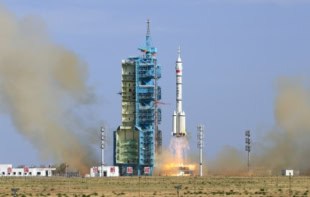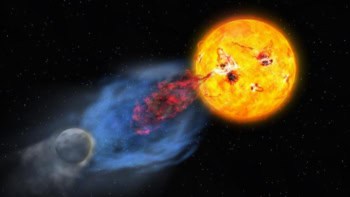
Researchers on the AEgIS collaboration at CERN have designed an experiment that could soon boost our understanding of how antimatter falls under gravity. Created by a team led by Francesco Guatieri at the Technical University of Munich, the scheme uses modified smartphone camera sensors to improve the spatial resolution of measurements of antimatter annihilations. This approach could be used in rigorous tests of the weak equivalence principle (WEP).
The WEP is a key concept of Albert Einstein’s general theory of relativity, which underpins our understanding of gravity. It suggests that within a gravitational field, all objects of should be accelerated at the same rate, regardless of their mass or whether they are matter or antimatter. Therefore, if matter and antimatter accelerate at different rates in freefall, it would reveal serious problems with the WEP.
In 2023 the ALPHA-g experiment at CERN was the first to observe how antimatter responds to gravity. They found that it falls down, with the tantalizing possibility that antimatter’s gravitational response is weaker than matter’s. Today, there are several experiments that are seeking to improve on this observation.
Falling beam
AEgIS’ approach is to create a horizontal beam of cold antihydrogen atoms and observe how the atoms fall under gravity. The drop will be measured by a moiré deflectometer in which a beam passes through two successive and aligned grids of horizontal slits before striking a position-sensitive detector. As the beam falls under gravity between the grids, the effect is similar to a slight horizontal misalignment of the grids. This creates a moiré pattern – or superlattice – that results in the particles making a distinctive pattern on the detector. By detecting a difference in the measured moiré pattern and that predicted by WEP, the AEgIS collaboration hopes to reveal a discrepancy with general relativity.
However, as Guatieri explains, a number of innovations are required for this to work. “For AEgIS to work, we need a detector with incredibly high spatial resolution. Previously, photographic plates were the only option, but they lacked real-time capabilities.”
AEgIS physicists are addressing this by developing a new vertexing detector. Instead of focussing on the antiparticles directly, their approach detects the secondary particles produced when the antimatter annihilates on contact with the detector. Tracing the trajectories of these particles back to their vertex gives the precise location of the annihilation.
Vertexing detector
Borrowing from industry, the team has created its vertexing detector using an array of modified mobile-phone camera sensors (see figure). Gautieri had already used this approach to measure the real-time positions of low-energy positrons (anti-electrons) with unprecedented precision.
“Mobile camera sensors have pixels smaller than 1 micron,” Guatieri describes. “We had to strip away the first layers of the sensors, which are made to deal with the advanced integrated electronics of mobile phones. This required high-level electronic design and micro-engineering.”
With these modifications in place, the team measured the positions of antiproton annihilations to within just 0.62 micron: making their detector some 35 times more precise than previous designs.
Many benefits
“Our solution, demonstrated for antiprotons and directly applicable to antihydrogen, combines photographic-plate-level resolution, real-time diagnostics, self-calibration and a good particle collection surface, all in one device,” Gautieri says.

Antimatter does not fall up, CERN experiment reveals
With some further improvements, the AEgIS team is confident that their vertexing detector with boost the resolution of the freefall of horizontal antihydrogen beams – allowing rigorous tests of the WEC.
AEgIS team member Ruggero Caravita of Italy’s University of Trento adds, “This game-changing technology could also find broader applications in experiments where high position resolution is crucial, or to develop high-resolution trackers”. He says, “Its extraordinary resolution enables us to distinguish between different annihilation fragments, paving the way for new research on low-energy antiparticle annihilation in materials”.
The research is described in Science Advances.



